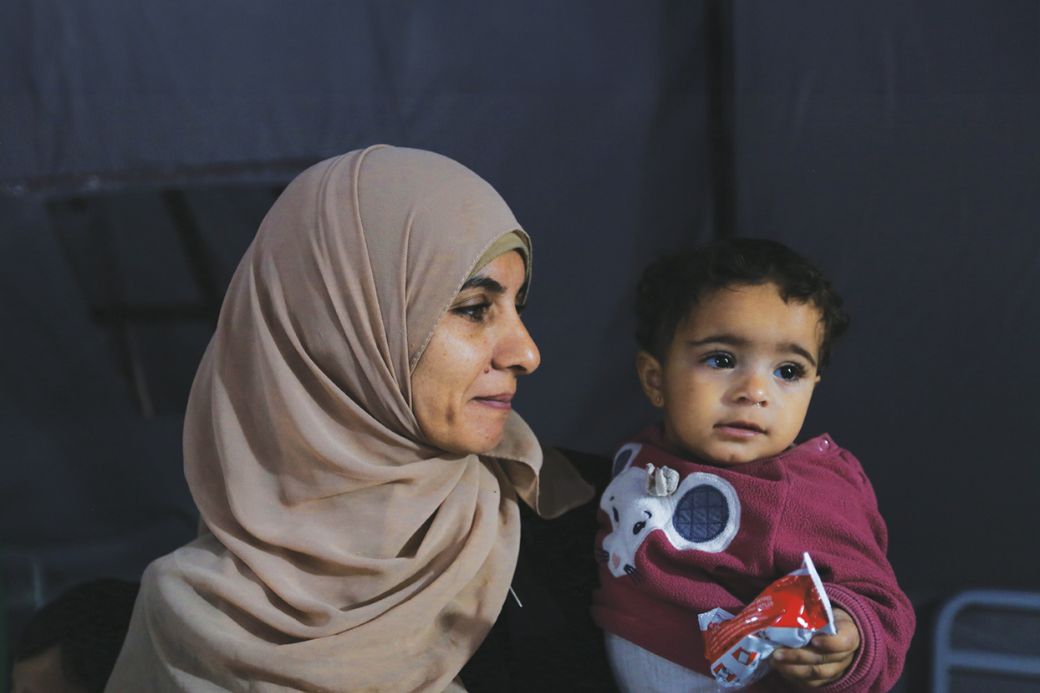‘The situation in the Gaza Strip is catastrophic and continues to worsen: famine is looming and children are starving. We never imagined that we would have to bring life-saving food to the gates of Europe,’ said Roberto Vignola, Deputy General Manager of CESVI Foundation.
We at CESVI have recently brought 18 tonnes of Plumpy’Nut to Gaza to save severely malnourished children.
Almost six months after the outbreak of the conflict on 7 October, at least 27 Palestinian children have died from hunger and dehydration, while 7 out of 10 children under the age of two are suffering from acute malnutrition in the Strip, where the state of famine is looming. In the war, the 335,000 Palestinian children under the age of five and the 135,000 under the age of two are at greatest risk from food deprivation. 90% of the younger children do not receive adequate breastfeeding and complementary food.
A total of 180,000 therapeutic food sachets (Plumpy’Nut) have been distributed to several hospitals and clinics in Gaza, which through their medical teams are administering the food therapy to thousands of children suffering from severe and moderate acute malnutrition. Plumpy’Nut is a peanut paste based food enriched with protein and minerals, used as ready-to-use therapeutic food for severely underweight children in humanitarian emergencies. It does not need to be diluted with water and can be easily administered in any context, avoiding risks of contamination.
‘We at CESVI have been working for almost 40 years to counter child malnutrition in different contexts around the world, such as in the Horn of Africa, which has always been plagued by these problems. In this very serious emergency situation, we can bring our expertise in the hope of saving as many children as possible from hunger, starting with the severely malnourished,’ Vignola adds.
The state of famine is imminent in northern Gaza: if conditions do not improve, it will be declared by May (UN Integrated Food Security Phase Classification (IPC)). Overall, in the entire Gaza Strip, the number of people facing catastrophic hunger is set to rise to over 1 million by July. In the north, two-thirds of families have gone days and nights without eating at least 10 times in the last 30 days (in the south it has happened to a third). Before the escalation in the conflict, acute malnutrition affected 0.8% of children under five years of age, while in February that figure in the northern areas rose to between 12.4% and 16.5%.
When malnutrition is combined with disease and lack of treatment, as is happening in the Gaza Strip, the youngest children are at high risk of acute infections, which further endanger their lives. There have been more than 296,000 cases of diarrhoea, one third in children under the age of five. In the territory, the war has destroyed the basic infrastructure, preventing the supply of drinking water, food, fuel, electricity, medicines, as well as medical care, because only 12 of the 36 hospitals are partially functional, and overcrowded at 327%.
‘The situation is very critical: every hour we hear the sound of shelling and a constant background of screaming and crying. It is increasingly difficult to find food and what little there is is very expensive and not enough for everyone. A kilo of flour costs 100 NIS (about €25) and a kilo of rice has reached 55 NIS (about €15). Hardly anyone has that much money,’ our colleagues in the field told us.
